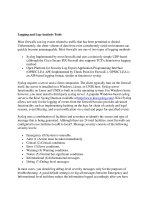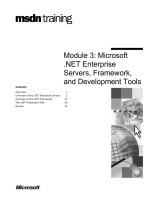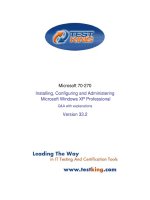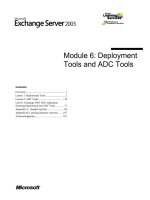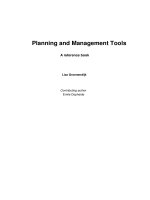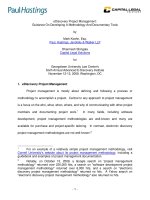Logging and Log-Analysis Tools
Bạn đang xem bản rút gọn của tài liệu. Xem và tải ngay bản đầy đủ của tài liệu tại đây (22.02 KB, 2 trang )
Logging and Log-Analysis Tools
Most firewalls can log events related to traffic that has been permitted or denied.
Unfortunately, the sheer volume of data from even a moderately sized environment can
quickly become unmanageable. Most firewalls use one of two types of logging methods:
•
Syslog Implemented by most firewalls and uses a relatively simple UDP-based
(although the Cisco Secure PIX Firewall also supports TCP) client/server logging
method.
•
Open Platform for Security Log Export Application Programming Interface
(OPSEC LEA API) Implemented by Check Point for Firewall-1, OPSEC LEA is
an API-based logging format, similar in function to syslog.
Syslog requires a server and a client component. The client typically runs on the firewall
itself; the server is installed on a Windows, Linux, or UNIX host. Syslog server
functionality on Linux and UNIX is built in to the operating system. For Windows hosts,
however, you must install a third-party syslog server. A popular Windows-based syslog
server is the Kiwi Syslog Daemon available at />. Kiwi Syslog
allows not only for the logging of events from the firewall but also provides advanced
functionality such as implementing hashing on the logs for chain of custody and legal
reasons, event filtering, and event notification via e-mail and pager for specified events.
Syslog uses a combination of facilities and severities to identify the source and type of
message that is being generated. Although there are 24 total facilities, most firewalls are
configured to use facilities local0 to local7. Message severity consists of the following
severity levels:
•
Emergency (0) System is unusable.
•
Alert (1) Action must be taken immediately.
•
Critical (2) Critical conditions.
•
Error (3) Error conditions.
•
Warning (4) Warning conditions.
•
Notice (5) Normal but significant conditions.
•
Informational (6) Informational messages.
•
Debug (7) Debug-level messages.
In most cases, you should log debug-level severity messages only for the purposes of
troubleshooting. A good default setting is to log all messages between Emergency and
Informational level and then reduce the information logged accordingly after you have
established what information you can obtain from more restrictive logging levels (that is,
Notice or Warning).
In the case of the Cisco Secure PIX Firewall, configuring the firewall to log to a syslog
server is a relatively trivial task. Example A-8
shows a sample of the commands to be
executed.
Example A-8. Configuring a Cisco Secure PIX Firewall to Use Syslog
firewall(config)# logging on
firewall(config)# logging host inside 192.168.1.101
firewall(config)# logging trap informational
firewall(config)# logging timestamp
A valuable component of logging events is the ability to perform log analysis. Whereas
most syslog servers enable you to log events, few enable you to perform event correlation
or event analysis. In addition, it quickly becomes an insurmountable task for a human
being to review the logs in a timely fashion to identify security events or negative trends.
Therefore, it is typically necessary to implement a complex scripting environment to
parse and correlate the logs that are collected or to use third-party log-analysis tools such
as Cisco Security Monitoring, Analysis, and Response System (CS-MARS), Net IQ
Security Manager, LogLogic, Network Intelligence, and SenSage. These tools all provide
for the archival, parsing, and reporting of huge amounts of data, shifting the burden from
the security staff and firewall admins to an automated and intelligent system of review
and notification.
